The Sweet & Crunchy Tofu Recipe That Actually Works
For years, I was in a toxic relationship with tofu. In restaurants, it was a soggy, sad little sponge. At home? Even worse. I followed recipes to the letter, but my tofu always came out soft and apologetic. It felt like a culinary secret I just wasn’t in on.
In this article
It wasn’t until I started working in professional kitchens that I finally cracked the code. And guess what? There’s no single secret ingredient. The magic is all in the technique—understanding what tofu is and how to treat it right. A lot of folks see tofu as just a block of soy, but it’s really a canvas waiting for you to create something amazing.
This guide is the foundation for incredible tofu. Once you get these methods down, you’ll be able to whip up amazing dishes without even thinking about it.
First Things First: Choosing Your Tofu
Success or failure begins in the grocery aisle. Tofu is made by pressing soy curds, and how much it’s pressed determines its firmness and, crucially, its water content. Water is the mortal enemy of crispy.
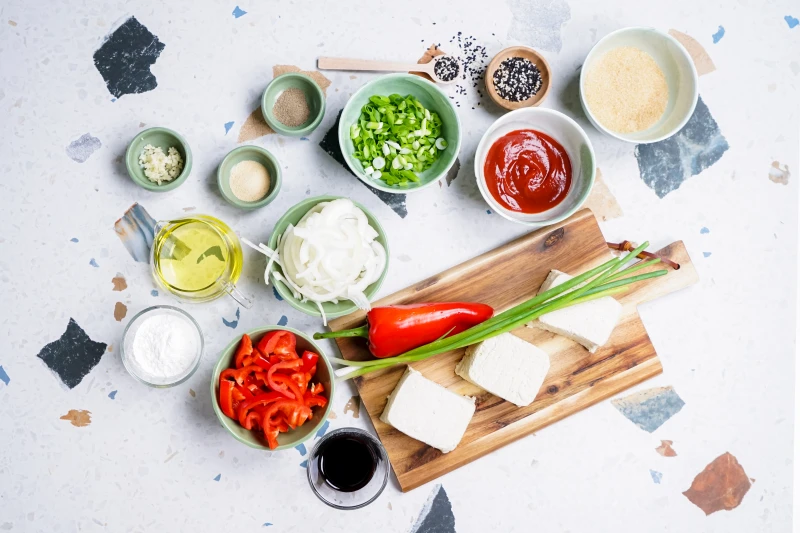
For any recipe where you want crispy tofu that holds its shape, you have to use extra-firm tofu. Seriously, no substitutions here. A typical 14- or 16-ounce block you can find at most grocery stores for about $3-$4 is perfect. This recipe will comfortably serve 2-3 people as a main protein.
- Silken or Soft Tofu: These are for smoothies and creamy sauces. They have a delicate, custard-like texture and will completely disintegrate if you try to fry them. Don’t even think about it.
- Firm Tofu: It’s a step up, but it still holds a ton of water. You can use it in a pinch, but you’ll need to press it for much, much longer.
- Extra-Firm Tofu: This is our champion. It has the lowest water content and the sturdiest structure, making it the ideal starting point for a truly crispy result.
The Most Important Step You Cannot Skip: Pressing
Okay, listen up. Even extra-firm tofu needs to be pressed. This is non-negotiable. I once skipped this step because I was in a rush and ended up with sad, steamy sponges that fell apart in the pan. I learned my lesson! Pressing removes water so the tofu can fry instead of steam, and it creates a denser, more satisfyingly chewy interior.
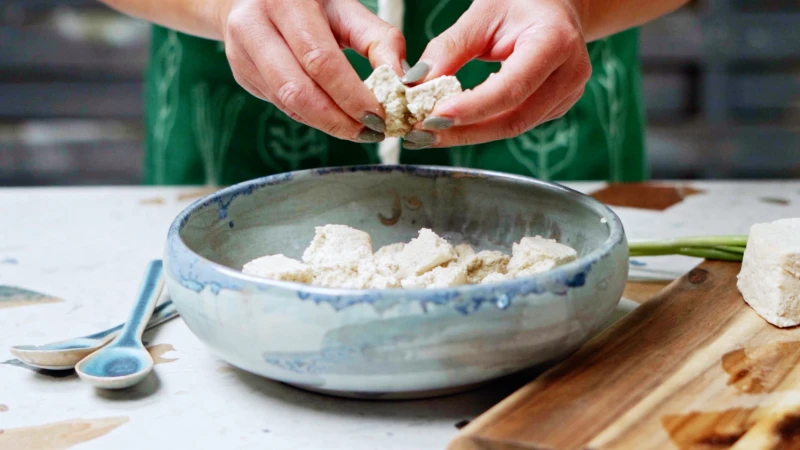
Aim for at least 30 minutes, but an hour is even better. You have two main ways to do this:
The DIY Method (No Gadgets Needed):
Just grab a few things from around your kitchen. Line a plate with a clean kitchen towel or a thick stack of paper towels. Place your drained tofu block on top, add another layer of towels, and then put something heavy on it. A cast-iron skillet, a few heavy books, or a cutting board with a couple of cans on top works great. You’ll be shocked by how much water comes out—don’t be surprised if you pour off nearly a half-cup!
Using a Tofu Press:
If you find yourself making tofu a lot, a dedicated tofu press is a fantastic investment. They give you even, consistent pressure without the balancing act of the DIY method. You can find a good one online for between $20 and $40. It’s a ‘buy it once’ kind of tool that makes the process cleaner and easier.

Oh, and here’s a quick win for you. If you only do ONE thing from this whole guide, just press your tofu properly for an hour. Seriously. It’s 80% of the battle and will change your tofu game forever, even if you just pan-fry it with a little salt and pepper afterward.
The Crispy Coating: Your Tofu’s Armor
Once your tofu is pressed and dry, it’s time to give it a crust. A simple coating of starch is what creates that light, shatteringly crisp exterior when it hits hot oil.
First, break the tofu into bite-sized pieces. My pro tip? Tear it with your hands. The rough, craggy edges create way more surface area, which means more nooks and crannies to get ridiculously crispy. It makes a huge difference compared to perfect cubes.
For the coating itself, you have options:
- Cornstarch: The classic choice. It’s cheap, accessible, and creates a reliable, light, and very crispy coating.
- Potato Starch: This is a secret weapon in many pro kitchens. It creates an even crispier, almost glass-like crust. If you can find it (check the gluten-free aisle or online for brands like Bob’s Red Mill), I highly recommend it.
- Arrowroot or Tapioca Starch: Good gluten-free options that create a fine, delicate crust.
Just toss your torn tofu in a bowl with a few tablespoons of your chosen starch, some garlic powder, and black pepper. A little smoked paprika is great for color, too. Heads up: don’t add salt to the coating! Salt draws out moisture, and we want the surface to be as dry as possible. The easiest, no-mess way to do this is to put the tofu, starch, and spices in a zip-top bag and give it a gentle shake. You want a thin, dusty layer, not a thick, pasty one.
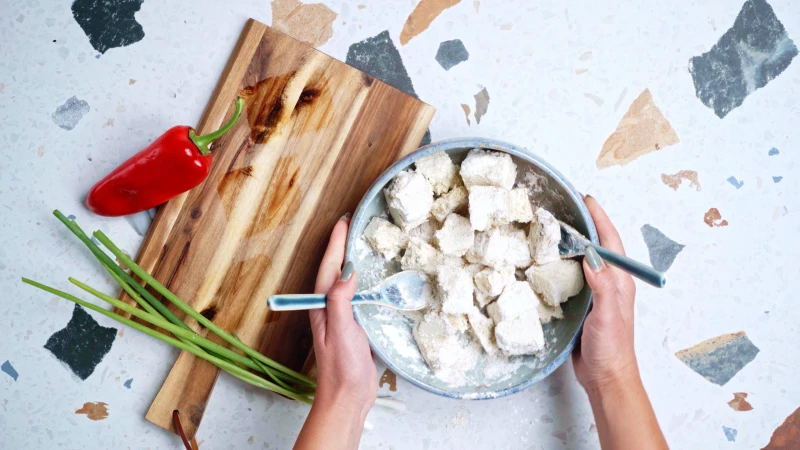
Time to Cook: Pan-Frying, Baking, or Air Frying?
How you cook the tofu is just as important as the prep. The goal is high, dry heat to create a crust before the inside can steam itself soft.
A quick safety note: you’re working with hot oil, so please be careful. Use a heavy-bottomed pan, make sure it’s dry before adding oil, and never walk away while it’s on the stove. Keep a lid handy just in case—if you ever have a small grease fire, turn off the heat and cover the pan to smother it. Never use water.
So, which method is for you? Let’s break it down.
For the Ultimate Restaurant-Quality Crunch: Pan-Frying
This method gives you that shatteringly crispy, golden-brown crust you dream of. Use a neutral oil with a high smoke point like canola, grapeseed, or avocado oil—save your toasted sesame oil for the sauce. Heat a generous layer of oil in a skillet over medium-high heat. How do you know it’s ready? When you drop the tofu in, you should hear a LOUD, aggressive sizzle. If it’s a weak fizzle, the oil isn’t hot enough, and you’ll get soggy tofu. Don’t crowd the pan! Cook in batches if you have to. Let the pieces fry for 3-4 minutes per side without moving them, letting that beautiful crust form. When they’re done, drain them on a wire rack, not paper towels. Paper towels trap steam and will undo all your hard work.
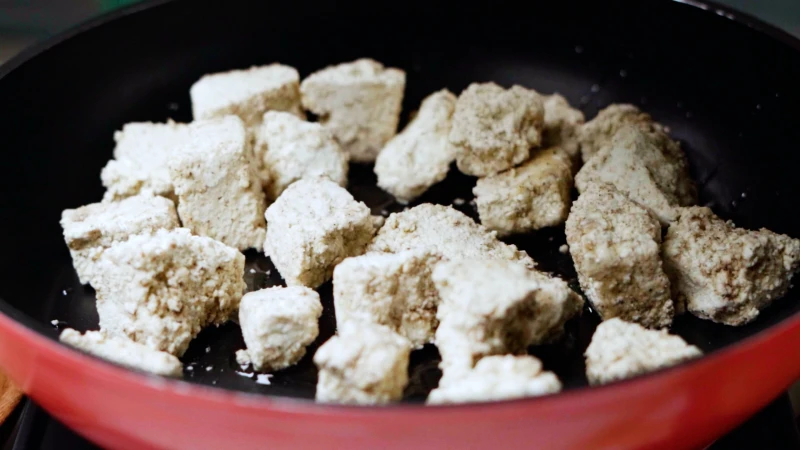
For a Great, Lower-Oil Result: Baking or Air Frying
If you’re looking to use less oil, these methods are fantastic. The texture will be a little different—more firm and chewy than audibly crunchy, but still delicious. For baking, spread the coated tofu on a parchment-lined sheet, give it a light spray of oil, and bake at 425°F (220°C) for 20-30 minutes, flipping halfway. For the air fryer, cook at 400°F (200°C) for 15-20 minutes, shaking the basket every 5 minutes until it’s golden and crisp. It’s a set-it-and-forget-it approach that’s hard to beat for convenience.
The Perfect Sauce to Bring It All Together
A great sauce needs balance. Here’s a flexible recipe that goes way beyond basic ketchup and sugar:
- Savory Base: 1/4 cup soy sauce (or tamari)
- Sweetness: 1/4 cup brown sugar or maple syrup
- Acid: 1 tablespoon rice vinegar (this brightens everything up!)
- Aromatics: 2-3 cloves of minced garlic and 1 teaspoon of grated fresh ginger
- Richness: 1 teaspoon of toasted sesame oil (added for flavor, not for cooking)
- Optional Kick: A teaspoon or two of gochujang or sriracha
Whisk it all together. Now for the most important part: the glazing. Do NOT pour this sauce over the tofu while it’s cooking. You’ll ruin the crust instantly. Instead, cook your tofu and set it aside on that wire rack. Pour the sauce into the hot, empty pan and let it bubble for 30-60 seconds until it thickens into a glossy glaze. TURN OFF THE HEAT, then add the crispy tofu back in. Toss for just 15-20 seconds to coat, and serve immediately. This last-second toss is the key to keeping it crispy.
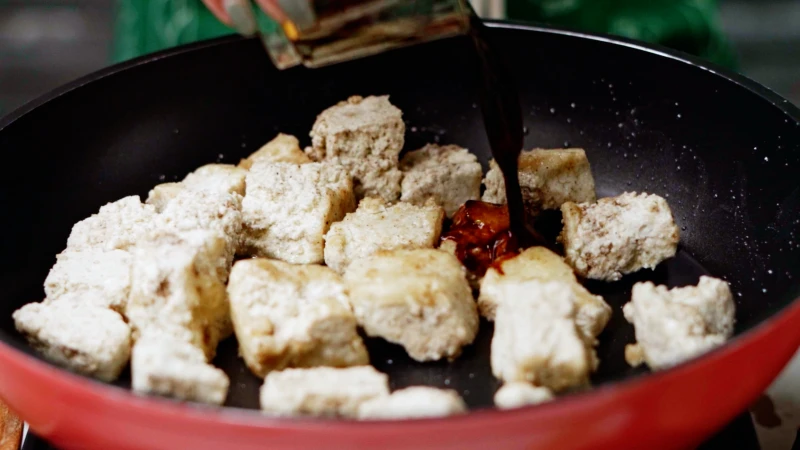
Your Shopping List & Quick-Start Guide
Feeling ready to go? Here’s what you’ll need.
The Shopping List:
- One 14-16 oz block of extra-firm tofu (about $3-$4)
- Cornstarch or Potato Starch (about $4 for a box that’ll last a while)
- A neutral cooking oil (like canola or avocado oil)
- Soy Sauce (or tamari)
- Brown Sugar or Maple Syrup
- Rice Vinegar
- Fresh Garlic & Ginger
- Toasted Sesame Oil
- Optional: Gochujang/Sriracha, green onions, sesame seeds for garnish
Putting It All Together: The Quick Version
- Press: Press one block of extra-firm tofu for at least 30-60 minutes.
- Tear & Coat: Tear the pressed tofu into bite-sized pieces. Toss gently in a bag or bowl with 3 tbsp of starch and seasonings (like garlic powder & pepper).
- Cook: Pan-fry in hot oil for 10-15 minutes until golden and crispy on all sides. Or, air fry at 400°F (200°C) for 15-20 minutes. Drain on a wire rack.
- Make Sauce: While tofu cooks, whisk together your sauce ingredients.
- Glaze & Serve: Simmer the sauce in the empty pan for 30-60 seconds until thickened. Turn off the heat, add the crispy tofu, toss quickly to coat, and serve immediately.
And there you have it. It’s not a magic trick, just good technique. Once you understand how to get water out and get a crust on, you’ll be making perfect, crave-worthy tofu every single time.
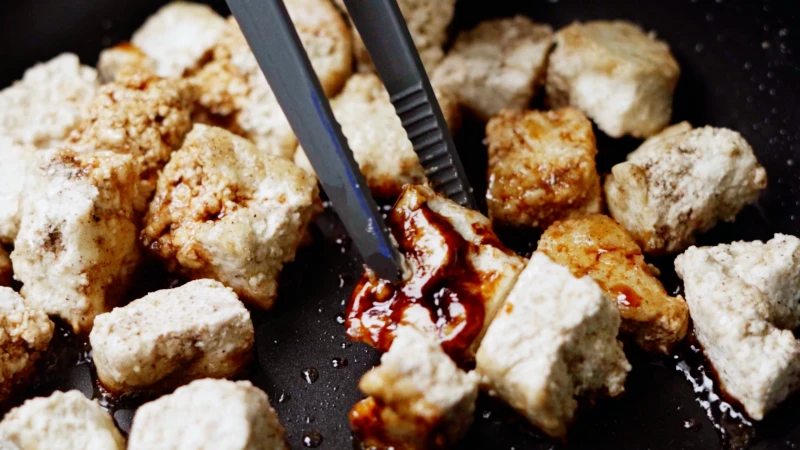
Inspiration:
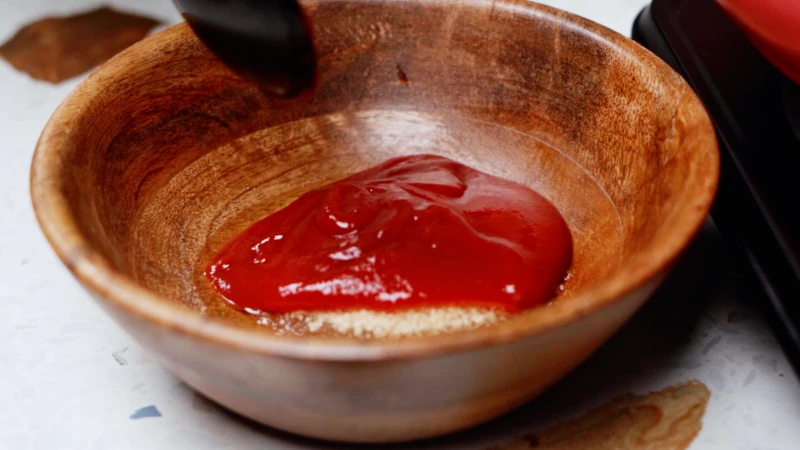
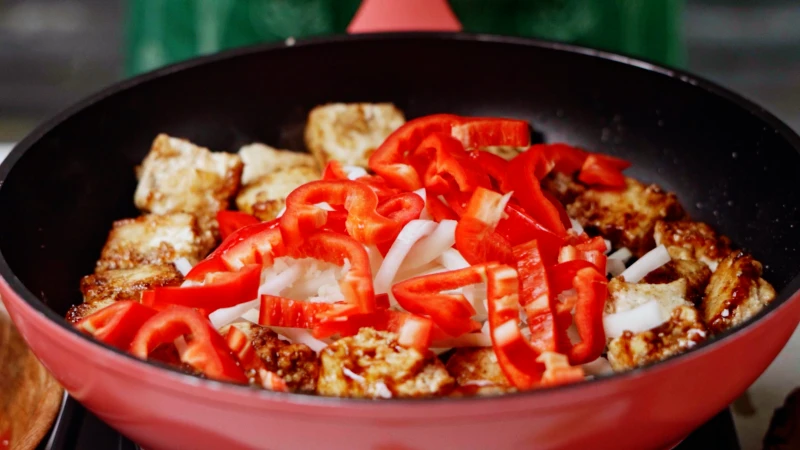
For a truly superior texture, resist the urge to slice your tofu perfectly. Instead, tear the pressed block into bite-sized, rustic pieces with your hands. This creates more jagged surface area and countless nooks and crannies that get extra-crispy in the pan and provide perfect little pockets to cradle the sweet and sticky sauce.
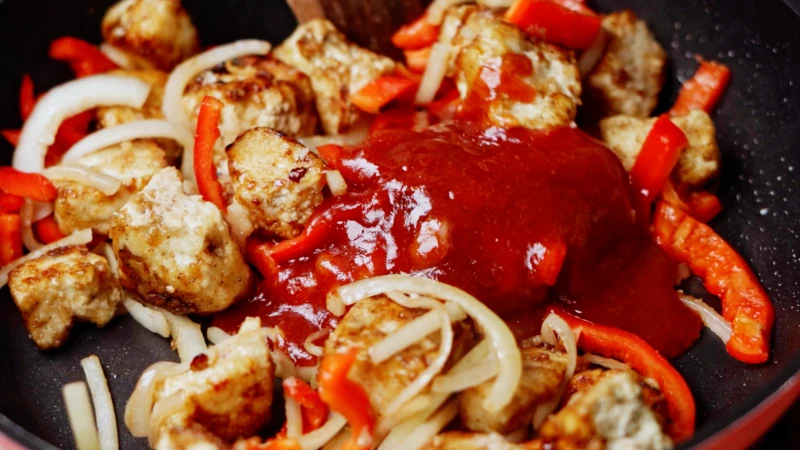
- A vibrant, fresh bite.
- A final layer of savory, nutty flavor.
- A stunning visual contrast against the dark glaze.
The secret to the perfect garnish? Use both thinly sliced scallions (the green parts) and toasted sesame seeds. Toasting raw seeds in a dry pan for 60 seconds until fragrant unlocks their flavor and makes all the difference.
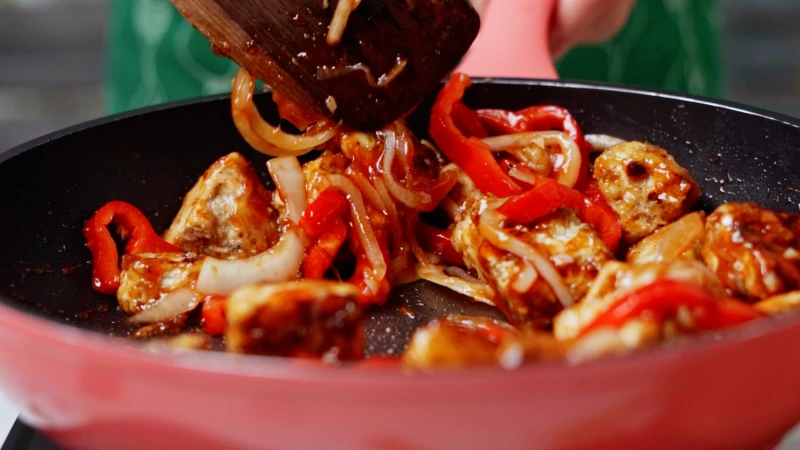
Can I get the same crispy results in an air fryer?
Absolutely! The air fryer is a game-changer for achieving a fantastic crunch with less oil. After pressing and tearing your tofu, toss it with cornstarch and just a tablespoon of a high-heat oil. Arrange it in a single layer in the air fryer basket and cook at 400°F (200°C) for about 15-20 minutes, shaking the basket halfway through. The tofu will become incredibly crisp and golden. You can then toss it with the prepared sauce right at the end.
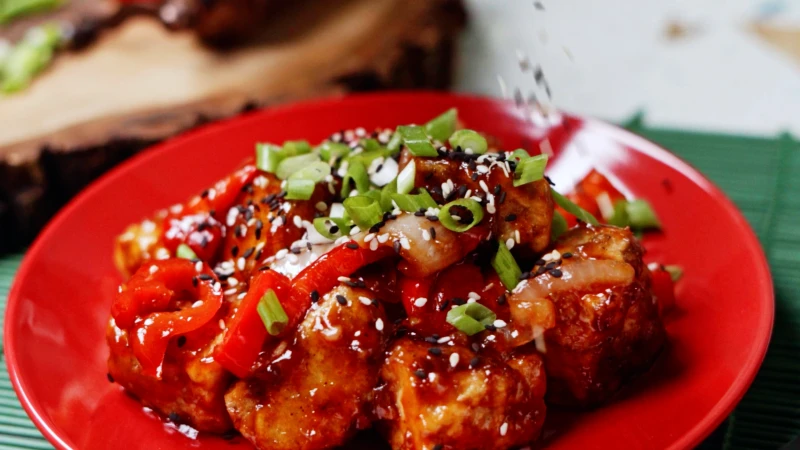
Tofu is composed of more than 80% water. If you don’t remove a significant amount of it before cooking, you’re not frying it—you’re steaming it.
This is why pressing is the non-negotiable step to achieving a firm bite and a golden, crispy exterior. The less water, the more direct contact the tofu has with the hot oil, triggering the delicious Maillard reaction responsible for browning and flavor.
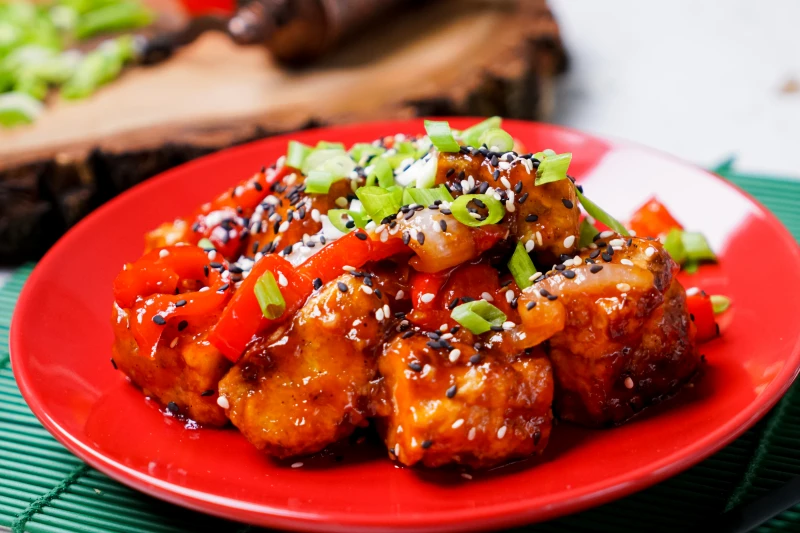
The DIY Press: The classic method. Wrap your tofu block in a clean kitchen towel or several paper towels, place it on a plate, and weigh it down with something heavy like a cast-iron skillet or a stack of cookbooks for at least 30 minutes.
The Dedicated Press: A gadget like a Tofuture or EZ Tofu Press applies even, consistent pressure and contains the excess water, making it a cleaner, more efficient process. If you cook tofu regularly, it’s a small investment that pays off in texture.
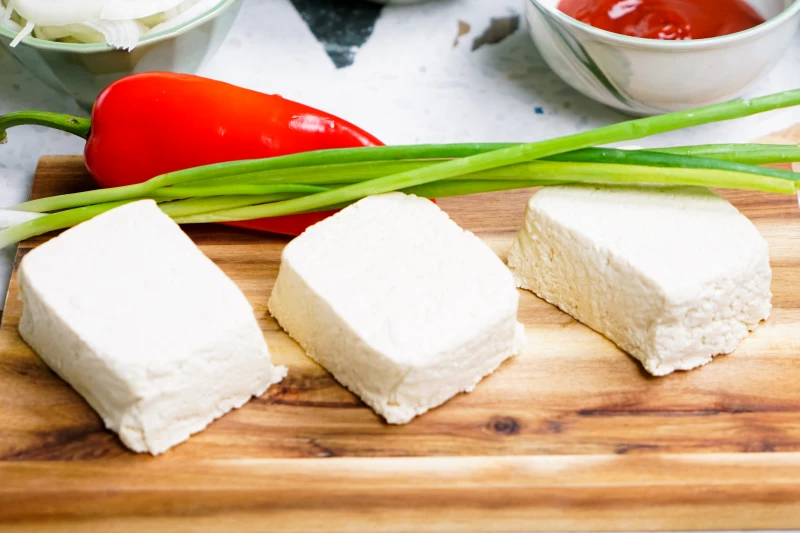
Once your tofu is pressed, it becomes a thirsty sponge ready to absorb flavor even before it hits the pan. A quick 30-minute marinade can add a foundational layer of taste.
- Classic Umami: A simple mix of low-sodium soy sauce (like Kikkoman or San-J Tamari), minced garlic, and a splash of mirin.
- Smoky & Spicy: Smoked paprika, cumin, a pinch of cayenne pepper, and a neutral oil.
Pat the tofu dry after marinating and before coating with cornstarch.
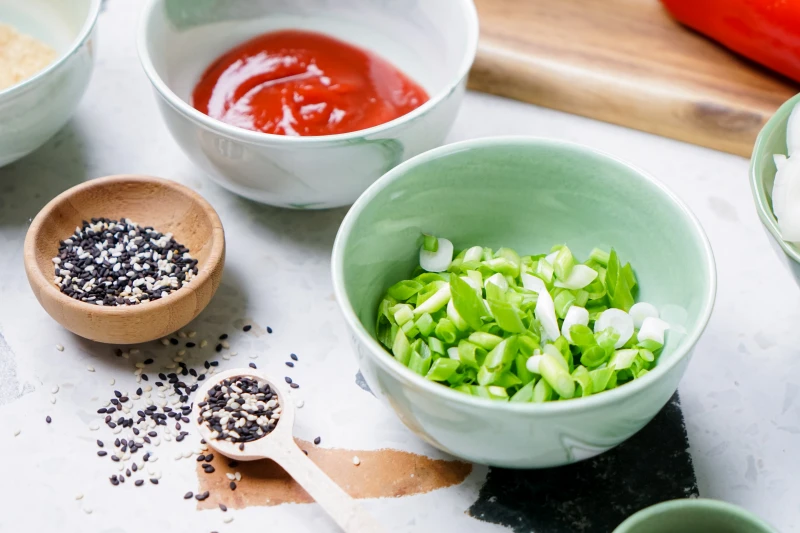
Crucial Tip: Don’t overcrowd the pan. Cooking the tofu in a single, uncrowded layer is essential for crispiness. If the pieces are too close together, they will steam each other instead of frying. If your pan isn’t big enough, it’s far better to cook the tofu in two separate batches than to cram it all in at once.
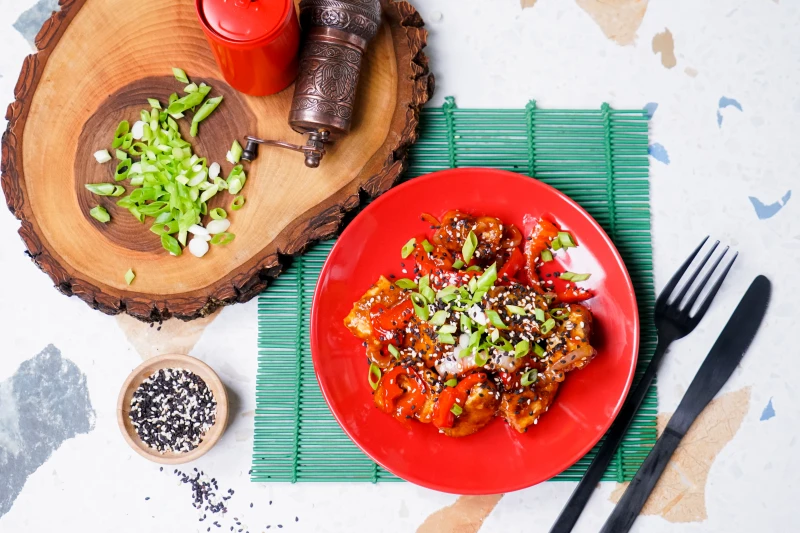
The type of soy sauce you use subtly changes the final dish. Japanese shoyu is slightly sweeter, while Chinese soy sauces can be saltier and richer. For a gluten-free option, tamari offers a deep, less salty umami flavor that is exceptionally good with tofu.
- Not getting the oil hot enough before adding the tofu. It should be shimmering.
- Adding the sauce too early. The sugars in the sauce will burn before the tofu gets crispy. Add it only during the last minute of cooking.
- Forgetting the cornstarch. It’s the key to creating a light, dry, super-crispy crust that the sauce can cling to.










